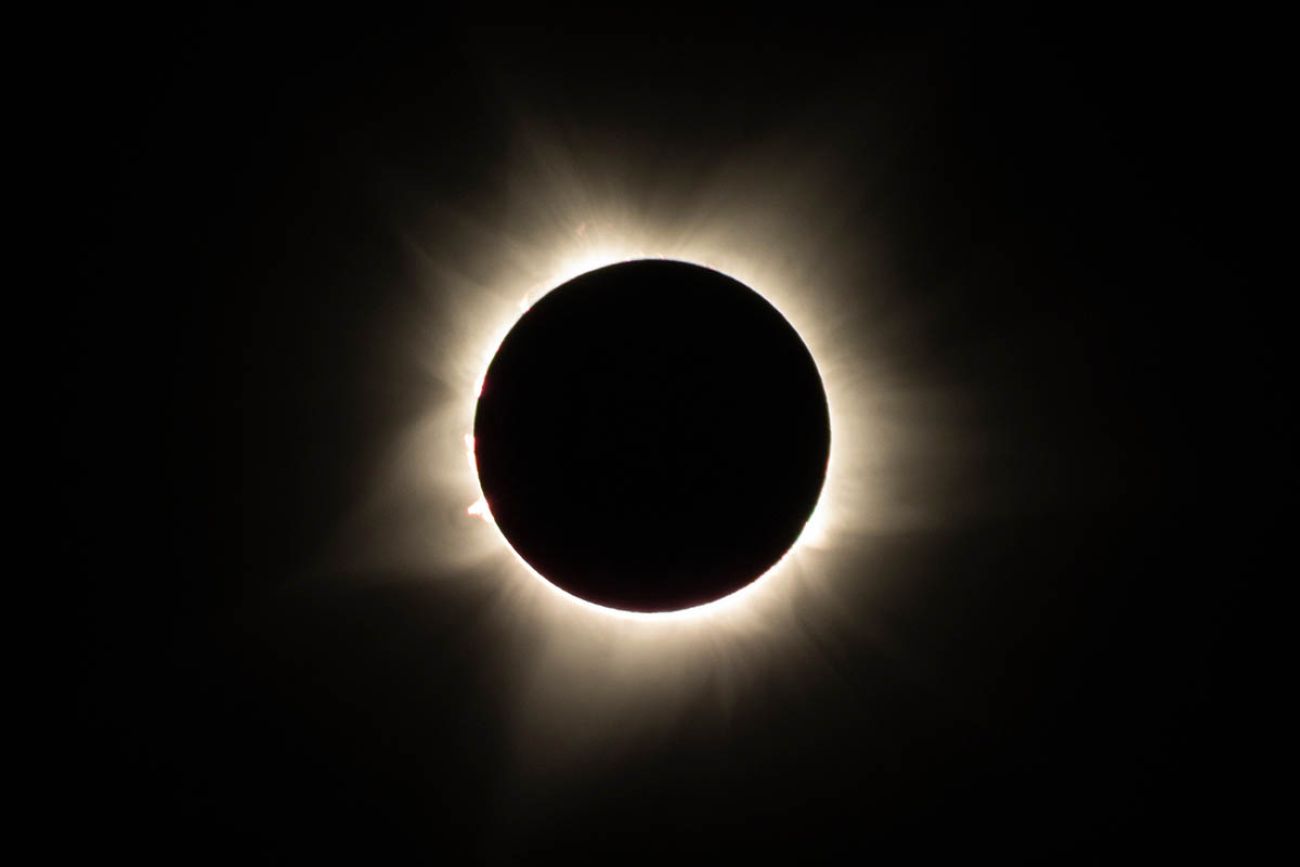Solar eclipse 2024: What time and other answers from a Michigan astronomer


- The total solar eclipse on April 8 will be visible in several states, but just a small part of Monroe County
- Those looking for a better view could travel further south but may come across midday traffic
- People viewing the eclipse by plane should still take the same precaution as those viewing it from the ground
April 5: What time is the eclipse in Michigan? Where to go and what you’ll see
April 3: Eclipse 2024: New map casts shadow of doubt, but Luna Pier still in path
The first total solar eclipse visible in Michigan in 70 years will occur on April 8, but only a small corner of the state, in Monroe County, will be able to see much of it.
About 6,100 people county residents live in the path of the total eclipse, which is expected to begin at 1:57 p.m. The total eclipse is set to peak at 3:13 p.m. and last 20 seconds to 1 minute.
Those headed to Monroe County can map out exact times with this tool.

Related:
- What would a solar eclipse look like from the moon? MSU astronomer answers that and more
- Solar Eclipse 2024: The only Michigan town that is in the path of totality
- Solar eclipse 2024: What will Michigan see? How to get glasses, other answers
- Solar eclipse April 8: How Michigan residents, others can protect eyes
- What to know about the April 8 total solar eclipse in Michigan
Many have questions about the once-in-a-lifetime event. Bridge Michigan spoke with Ted Bergin, professor and chair of astronomy at the University of Michigan, to get some answers.
How often do these types of eclipses occur in the U.S.?
“The moon is of a certain size and it is much, much smaller than the sun, but it's close enough to the earth, that its angular size is about the same size as the sun and that's just “an accident of birth,” he said. “These eclipses happen all the time all over the globe. However, it’s rare that you get any total solar eclipse that encompasses the United States. We just had one recently, a few years ago, but it's rare enough that you may only see a handful in your lifetime if you're just restricting yourself to being in the United States.”
What makes this eclipse different from the rest?
“This is just neat because it's a total solar eclipse. That is if you're in the right spot, which is not Michigan. You have to go south to Ohio and Indiana or go further south … then you'll potentially be able to see the stars in the middle of the day.”
What exactly will people viewing the eclipse be looking at?
“Essentially what you'll see is the sun getting eaten by something that is the shape of a circle,” he said. “A series of crescent suns will appear, and it's fascinating and super cool. When it gets to sort of a crescent sun, the sunlight going through a colander will show little moonlets, little crescent moonlets. The sunlight going through the trees looks like moons, it's amazing. Your shadow, your own shadow gets distorted because the sun is this weird shape.”
“The key thing is, you get to see the stars and depending upon where Mercury is, maybe you could see Mercury (or) you can see Venus depending upon where they are in their orbit, if they're not behind the sun.”
Will the view of the eclipse be different for people traveling by plane to see it?
“No, they’re all seeing the same thing, they just have a more panoramic view. The distance to the sun … is 488 billion feet away, right? So, even if you’re flying above the Earth 30,000 feet in your airplane you are nowhere closer to the sun.”
What should people be cautious of while they are making plans to see the eclipse?
“I really encourage people to go outside and look because it's really, really super cool. It’s so fascinating and it's just just such an amazing experience, but it may be cloudy. And then the other thing is for people who are driving south, be aware that traffic jams can occur in the middle of nowhere. So leave early to get wherever you intend to go.”
Michigan Environment Watch
Michigan Environment Watch examines how public policy, industry, and other factors interact with the state’s trove of natural resources.
- See full coverage
- Subscribe
- Share tips and questions with Bridge environment reporter Kelly House
Michigan Environment Watch is made possible by generous financial support from:
Our generous Environment Watch underwriters encourage Bridge Michigan readers to also support civic journalism by becoming Bridge members. Please consider joining today.
See what new members are saying about why they donated to Bridge Michigan:
- “In order for this information to be accurate and unbiased it must be underwritten by its readers, not by special interests.” - Larry S.
- “Not many other media sources report on the topics Bridge does.” - Susan B.
- “Your journalism is outstanding and rare these days.” - Mark S.
If you want to ensure the future of nonpartisan, nonprofit Michigan journalism, please become a member today. You, too, will be asked why you donated and maybe we'll feature your quote next time!




